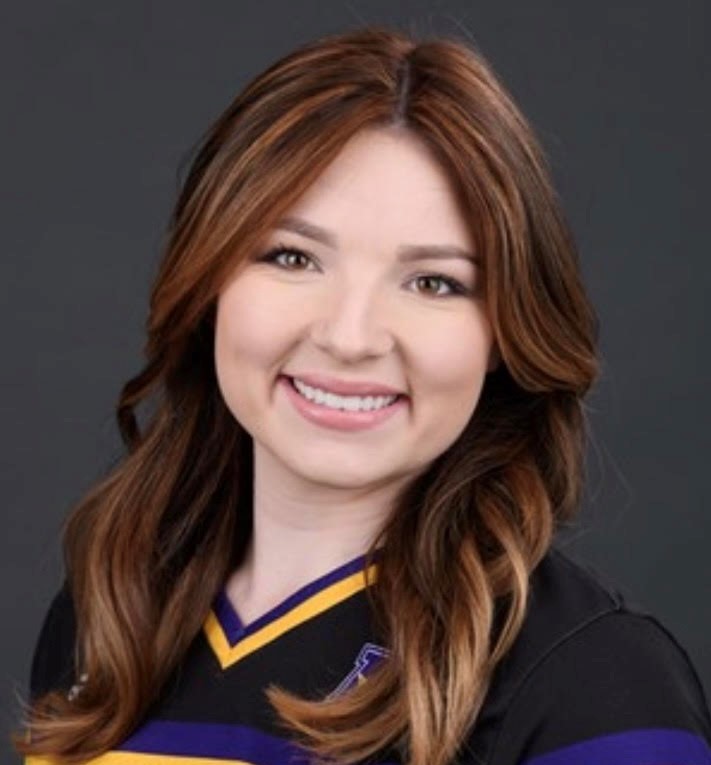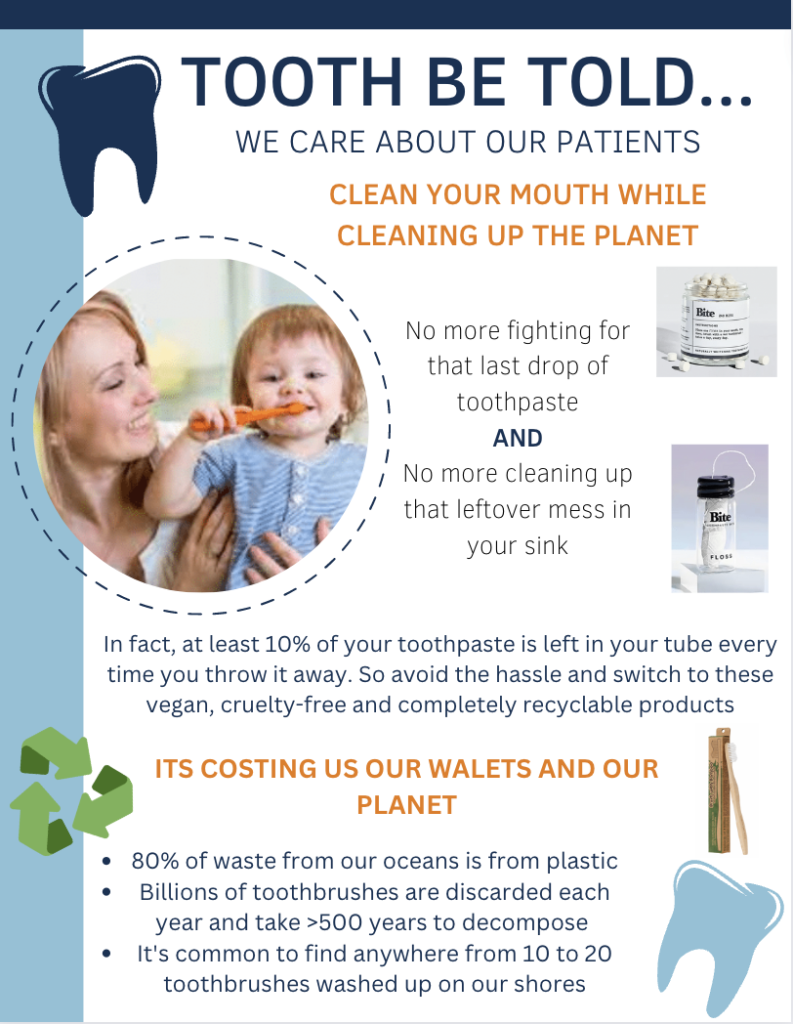Student Innovation Curbs Oral Hygiene Pollution
Written by Sydney Griggs and Dr. Eli Typhina
Nobody thinks that something as small as a toothbrush could be detrimental to our planet. However, we discard billions of plastic toothbrushes each year that take several hundred years each to decompose – not to mention the plastic toothpaste tubes and floss containers along with them. Plastic toothbrushes take more than 500 years to decompose, which is a problem when approximately 80% of waste from seas and oceans is from plastic (Blasquez, 2021). These billions of toothbrushes that are thrown away each year account for millions in waste and in dollars. Now, those sound like some big numbers, but it couldn’t possibly affect you in the United States right? Wrong. On an average beach cleanup day in Hawaii, it is common to find anywhere from 20-100 plastic toothbrushes washed up from our oceans (Borunda, 2019)
I didn’t know this even though I’ve been around dentistry my whole life because my grandfather started his own practice, Greeson Dentistry, approximately 60 years ago and now my uncle runs it. As a Master’s of Physiology student I focused on dental oriented courses, but I wanted to push beyond the normal boundaries of my discipline and gain new perspectives so I took Environmental Behavior Change with Dr. Eli Typhina (ES495/NR595). This course allowed me to study dentistry through new lenses related to human behavior and the environment. My goal was to develop a prototype for dental practices to support patients’ reduction in oral health pollution, such as converting to bamboo toothbrushes (instead of plastic) and tab toothpaste (instead of paste in non-recyclable tubes).
In the course, I started to formulate my intervention by looking at literature on the topic. I discovered staggering facts about pollution caused by in-home oral hygiene products (mentioned at the beginning of this article) and that there are eco-friendly, biodegradable alternatives (including product packaging). So why aren’t these products standard? Why have I, someone who has been surrounded by dentistry my whole life, never heard of these products much less incorporated them into my own daily routine?

By applying methods and theories from the disciplines of marketing, psychology, computer science, and design I started collecting data through interviews and surveys with experts and patients. In this process I learned that tooth care product purchasing is so habitual that people rarely stop to think about what their toothbrush is made of or what is in the toothpaste they use. Additionally, many people use the toothbrush and paste their dentist recommends and/or gives at each visit because they view their dentist as an expert. Habits and expert testimonials (such as “dentist recommended”) are significant theoretical components predicting the continuation or alteration of a habit, such as the types of tooth care products one uses and purchases (Cialdini, 2009).
The theory of locus of control also plays into altering this behavior, as it states that people’s behavior is influenced by their perception of their ability to predict and control their behavior (Cleveland & Kalamas, 2015). My research revealed that individuals do not feel they have the power to change or help the growing plastic epidemic in dentistry and that they do not want to stray from products they know and are comfortable with. However, my research also showed that people care what their dentist recommends and are more willing to make changes if prompted to do so during their time at the dentist.
Considering the aforementioned findings and theories discussed in class, I developed a prototype of a package dental offices could use to prompt clients to switch to eco-friendly oral care products. This package included:
A goodie bag that you receive at the end of a cleaning visit, using images that connect with the target audience and a “dentist recommended” statement, drawing on the persuasion of expert testimony. Inside the bag clients would find a bamboo toothbrush, toothpaste tabs, and floss packaged in recyclable material, instead of harmful plastic. Additionally, to enable clients to feel they can make a difference, I developed a coupon the patient can use towards a purchase of these products located in the dental office waiting room.
A game for the office’s waiting room that would enable adults and children the opportunity to interact with new, eco-friendly products, as well as learn about the harmful effects of plastic products. The game has a tooth model with fake cavities that users can attempt to remove using the same sustainable products found in the goodie bag. The game includes a pamphlet on how to brush the model’s teeth along with factual statements on why that individual product is better for the environment.
A poster for above the game and in exam rooms illustrates, with images and facts, the harm plastic tooth-care products have on the planet and what clients can do about it.

Before my time at State, I would have never thought of working in an interdisciplinary manner, but this course along with the others has shown me how diverse disciplinary perspectives can help us solve problems in new ways while also expanding your learning exponentially.
I am so excited to make my prototype package into a reality in my family’s dental office. If you want to learn more about my work in this course, you can visit my website: https://sites.google.com/ncsu.edu/eco-friendlydentalcare/prototype
If you are interested in learning more about the course or innovating to prompt environmentally friendly behavior, reach out to Dr. Eli Typhina.
References
Blasquez, A. (2021, January 6). The importance of reducing the plastic footprint in the dental practice. Dentaltix. Retrieved September 12, 2022, from https://www.dentaltix.com/en/blog/importance-reducing-plastic-footprint-dental-practice
Borunda, A. (2022, August 31). Your plastic toothbrush is a bigger problem than you realize. Environment. Retrieved September 12, 2022, from https://www.nationalgeographic.com/environment/article/story-of-plastic-toothbrushes
Cialdini, R.(2008). Influence: Science and practice (Vol. 5). Boston, MA:Pearson.
Cleveland, M. & Kalamas, M. (2015). Environmental locus of control. In J.
- Categories: